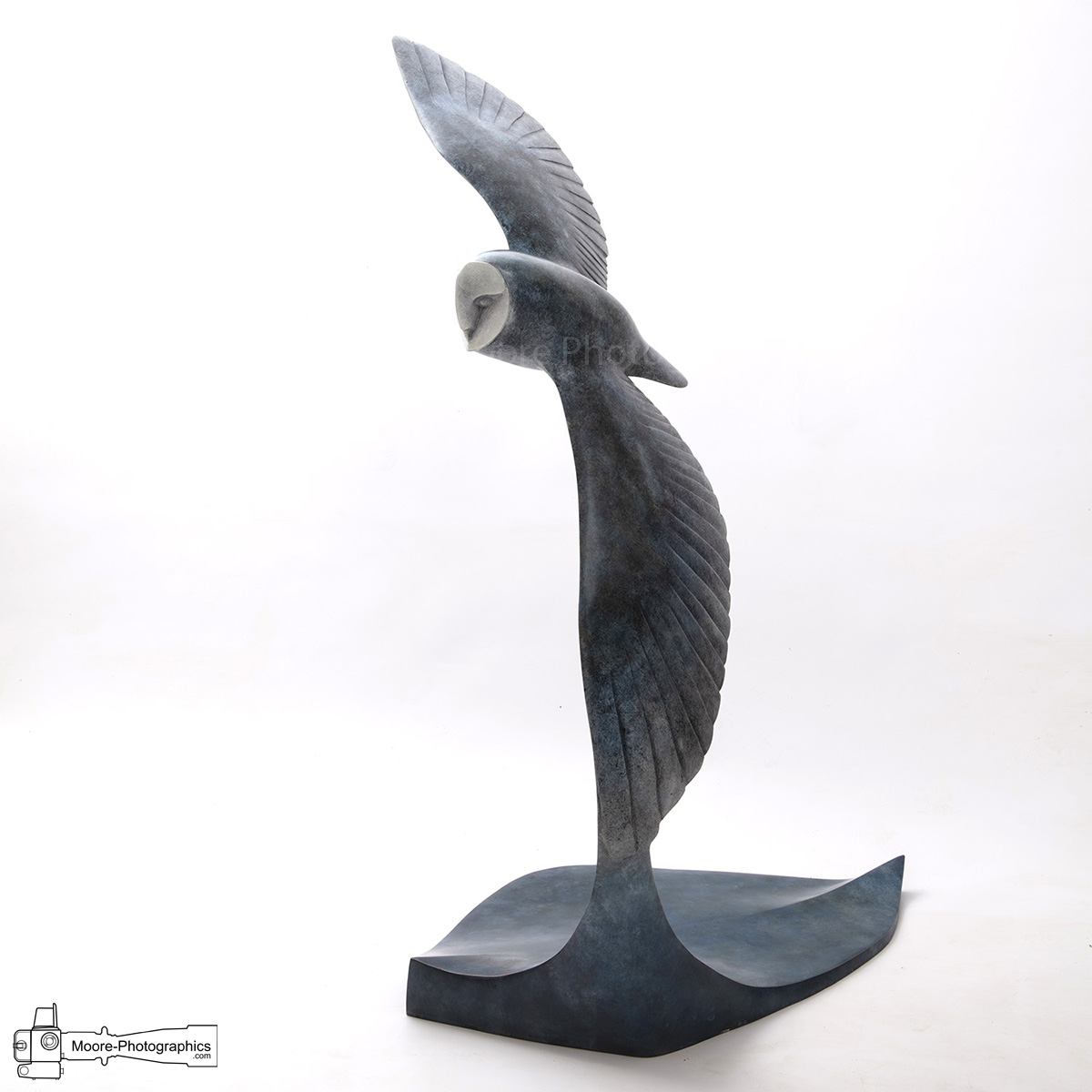Like most other businesses, sculptors need to have professional images, to be able to promote their works of art.
However it’s difficult to get wonderful pictures to showcase that work accurately either online, or in a brochure. If a would-be client cannot get to their studio in person, or see an exhibition of their work in person, how can they get a ‘feel’ for their work and its detail before committing to that investment?
As a professional photographer I can ensure that I produce images that give an accurate depiction of the artwork, and also take evocative photos for clients and future clients to view.
Often, sculptors and other artists are selling their work online, which means the images need to give a true representation of their art – taken in a way that evokes emotions and feelings.
There are two angles you can approach photographing art works.
1 – you can photograph them in a lifestyle type shoot, where you have the art work displayed in a room, or outside in a garden.
2 – a studio photoshoot, against a white background.
From an e-commerce point of view, Google and other search engines require white background so they are easily recognised.
How I approach photographing a sculpture.
I usually have the piece of art work for a couple of days for me to understand it, get to know it. I want to capture the work looking at it from a client’s point of view – as something that will draw them in to look closer and admire the piece of art.
Yet I also try to understand what the artist wants to express – it’s my job to bring out the creativity of that piece, so that people want to possess it!
I take my time to look at the art work from a variety of angles, rather than just snapping away taking loads of pictures and hope there’s a good one. Instead, I choose the best angles, to bring out the its character, and take the photo from that view.
Lighting is very important. I already have a white background set up in my studio, and as I photo, I can turn lights on or off to create shadows, or capture the gleam of metal or glass.
Photographing a piece of sculpture is a little like high-end, headshot photography – you use similar techniques.
Using lights, I can better emphasise certain facets, and hope to pull at people’s emotive senses.
Naturally colour representation is also extremely important, so I use my colour swatch to match up colours as accurately as possible.
Working artists
Over the years, I’ve developed a relationship with www.Livingart.Global who are based in Heddington.
We have developed a ‘house’ style to present the art works on their site. This means, the lighting conditions are uniform across the various artists, whose work appears on the site gallery.
When someone sees a piece of work, subliminally, they recognise that it is a ‘living art global’ piece.
Two particular artists I work with are: Matt Duke and Amanda and Björn Sjöling.
Matt Duke’s work is all about nature, and the relationship between form and shape. He works in bronze, and his sculptures are actual size. Therefore, his flying owl, has the wing span of a live owl, and his spectacular Red Kite has the life-size span.
When photographing his works, I always try to capture the movement, that is already evident in his art work. And the white background allows nothing else to distract the eye, other than the work itself.
The perfect example of where light and shadow come into play is with Amanda and Björn Sjöling’s, seated sculpture of a skeleton. The photo is taken front on, but the shadow that is created to the right of the skeleton, shows the gun aimed at his head, more clearly. They also work with bronze.
I have worked on a catalogue for Living Art, and they are now in their second edition.









